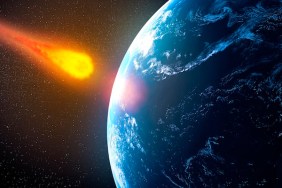Credits: NASA/JPL-Caltech/T. Pyle
NASA have discovered a new planet that has been dubbed “Earth 2.0,” given its similarities with our own planet.
The planet’s official name is Kepler 452b, and it is the smallest planet that has thus far been found by the space organization. NASA has described it as a “bigger, older cousin” to Earth, and has stated that it was discovered in a habitable zone that means it may be home to other lifeforms on its surface or in its oceans. However, that doesn’t necessarily mean that we’ll discover alien life on the planet, but it does mean that is the planet that most resembles Earth out of any that humankind has discovered thus far.
Also See: Google Investment Magic Leap Could be a Huge Threat to the Microsoft Hololens
Kepler 452b is roughly 60% larger than Earth, though its orbit is only 20 days longer than ours, measuring in at 385 days. Like Earth, it also resides near a star that a similar temperature and mass to our own, though it is believed to have been around for 6 billion years, 1.5 billion longer than Earth.

Credits: NASA/JPL-Caltech/T. Pyle
Speaking of the discovery, Jon Jenkins, Kepler data analysis lead at NASA’s Ames Research Center, said: “It’s awe-inspiring to consider that this planet has spent 6 billion years in the habitable zone of its star; longer than Earth. That’s substantial opportunity for life to arise, should all the necessary ingredients and conditions for life exist on this planet.”
Alongside the discovery of Kepler 452b, NASA have also increased the number of new exoplanet candidates by 521, with the number of planet candidates detected by the Kepler mission having risen to 4,696 in total. However, out of these planets only 12 have diameters that are similar to that of the Earth’s, and only 9 are orbiting within their star’s habitable zone, which dramatically decreases the number of planets that could contain life.
Still, this new discovery is a landmark achievement for NASA, with their scientists now producing a catalog of the discoveries made from observations regarding the Kepler’s journey from 2009 – 2013.





